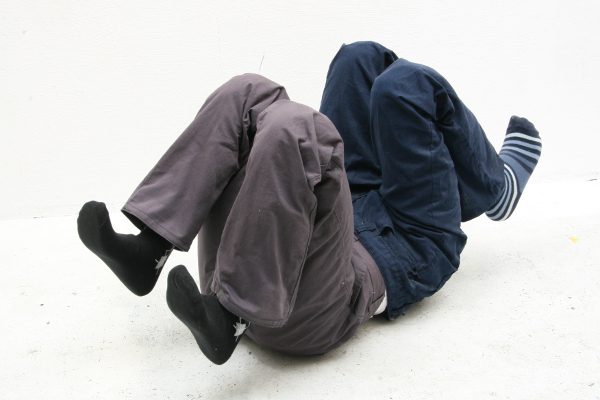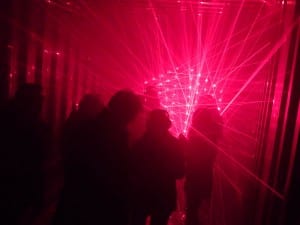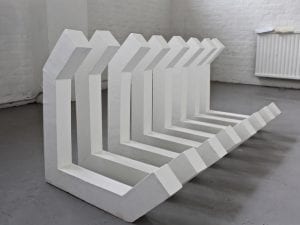Having been selected from thousands of entrants to be part of the 100 longlist for the Aesthetica Art Prize 2013, Jurgen Winkler is a contemporary artist who experiments with form and sculpture to visualise human behaviour. Alienation and intimacy, power and impotence are recurring themes in his work. With the Aesthetica Art Prize 2014 now accepting entries (until 31 August) we speak to Winkler about taking part in international art competition and what inspires him.
A: What does being selected for an Art Prize mean for you?
JW: Being selected for an art prize makes me feel very good. Apart from the recognition an art prize offers, it gives my work a broader international platform. Aesthetica is a celebrated international art and culture magazine with a specific charisma. By being longlisted in the Aesthetica Art Prize Anthology 2013 the many readers of the magazine will be pointed to my work.
A: Where do you find inspiration?
JW: For me human behaviour is a source of astonishment and inspiration. There are so many interesting or striking ways in which people behave or do things. For me it is, as the French say, “un mer a boire.” Artists such as Louise Bourgeois, Marcel Duchamp and the contemporary Swiss artists Fischli und Weisss and the Belgian artist Kamagurka inspire me.
A: Your sculptural piece A prisoner’s dilemma explores a powerful mathematical metaphor that demonstrates how defection can undermine cooperation. How did you develop this concept into sculpture?
JW: I read Super co-operators by Martin Nowak, a book about evolution, altruism and human behaviour. The concept of evolution is mostly linked with the idea ´survival of the fittest´, and that selfishness is the only strategy of survival. But Nowak proves that cooperation is also vitally important. The effect of these two basic, but seemingly opposing, mechanisms in the process of evolution – selfishness and cooperation – interested me.
While re-connecting parts of male window mannequins for my sculptures, I suddenly ‘saw’ these mechanisms visualised: two struggling individuals connected by their waists. Two persons completely dependent of each other but also striving to independency. So for A Prisoner´s Dilemma I did not work out of a clear concept, but it was more a matter of serendipity.
A: Humour seems to be another underlying theme in your artwork. Why do you think humour is important in art?
JW: To me humour is an important aspect of life. It gives me the ability to put things in a new perspective, sometimes with an unexpected result. In my artwork I now and then explore serious things by also showing the funny side of it. That gives my work sometimes an aching undercurrent. If possible I want to enmesh the spectator. Especially if I can realise a mix of the uncanny with humour.
A: If you could exhibit anywhere, where would it be?
JW: I would like to operate with my work in the international art scene. That is one of the reasons I applied for open calls for exhibitions in England and other countries in Europe. An exhibition in, for example, MoMA in New York, would be a highlight. If a specific site is appropriate for my work, I will show it there because I would like to offer an opportunity of exchange between the spectator and my work.
A: Where will you be exhibiting next?
JW: Currently, several of my sculptures are shown in the exhibition Orchestral Manoeuvres in the Dark at Arti & Amicitiae in Amsterdam. And my new work Are you experienced? (2014) has been selected for a large exhibition during summer in the famous Gemeente Museum of The Hague.
To see Jurgen’s work visit www.jurgenwinkler.nl.
The Aesthetica Art Prize is now open for entries. Submit your work by 31 August at www.aestheticamagazine.com/artprize.
Credits
1. Jurgen Winkler, A prisoner’s dilemma.





